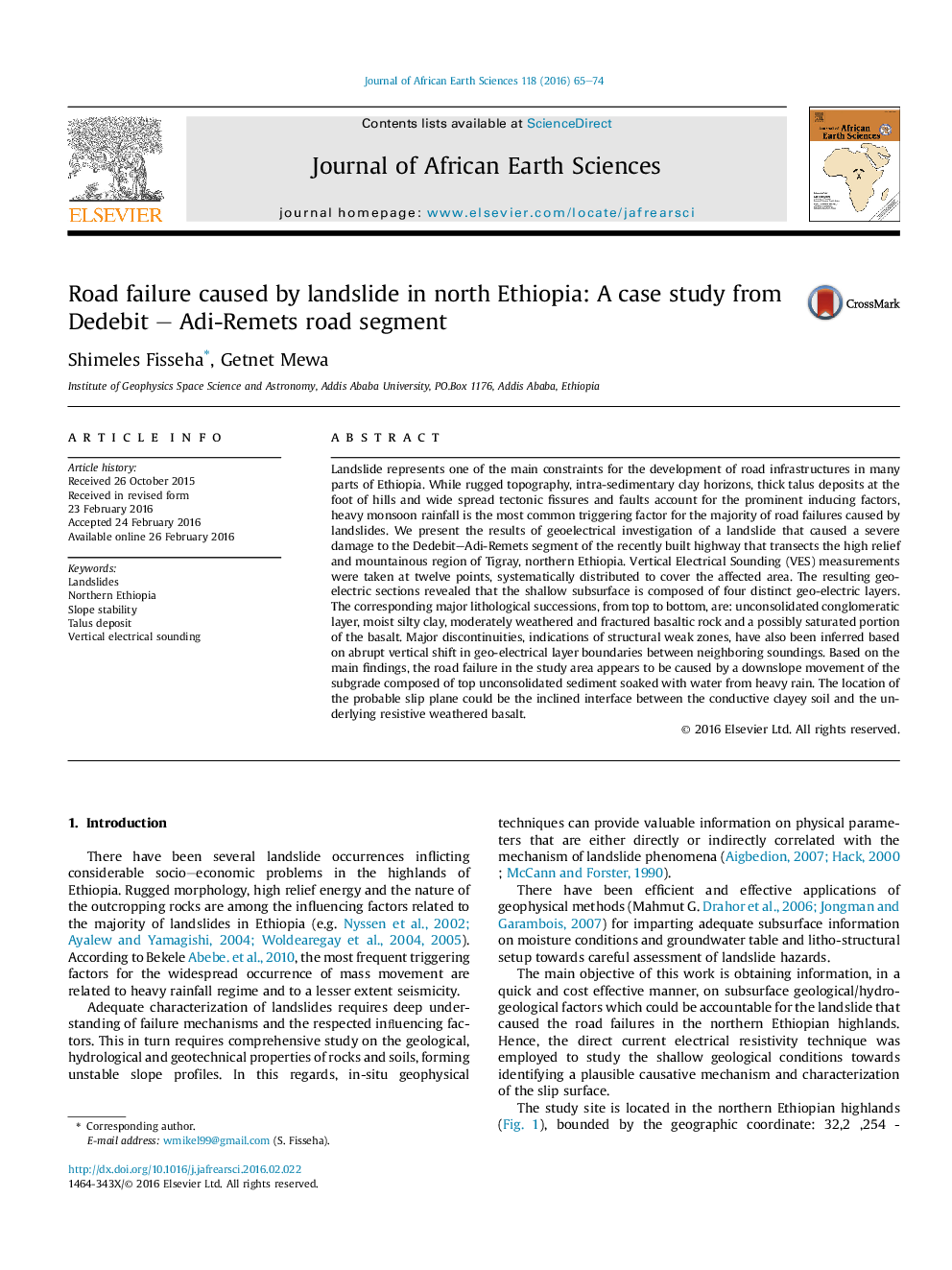| Article ID | Journal | Published Year | Pages | File Type |
|---|---|---|---|---|
| 4728426 | Journal of African Earth Sciences | 2016 | 10 Pages |
•Geoelectric sections shows talus deposit on top of clayey soil resting on volcanic substratum with shallow water table.•The cause of landslide in the study area could be the rainfall triggered down slope movement of the top talus deposits.•Lateral discontinuities such as cracks/fissures serve as secondary permeability and facilitates water seepage.•VES survey has given adequate insight into failure mechanisms and influencing factors of the landslide in the study area.
Landslide represents one of the main constraints for the development of road infrastructures in many parts of Ethiopia. While rugged topography, intra-sedimentary clay horizons, thick talus deposits at the foot of hills and wide spread tectonic fissures and faults account for the prominent inducing factors, heavy monsoon rainfall is the most common triggering factor for the majority of road failures caused by landslides. We present the results of geoelectrical investigation of a landslide that caused a severe damage to the Dedebit–Adi-Remets segment of the recently built highway that transects the high relief and mountainous region of Tigray, northern Ethiopia. Vertical Electrical Sounding (VES) measurements were taken at twelve points, systematically distributed to cover the affected area. The resulting geo-electric sections revealed that the shallow subsurface is composed of four distinct geo-electric layers. The corresponding major lithological successions, from top to bottom, are: unconsolidated conglomeratic layer, moist silty clay, moderately weathered and fractured basaltic rock and a possibly saturated portion of the basalt. Major discontinuities, indications of structural weak zones, have also been inferred based on abrupt vertical shift in geo-electrical layer boundaries between neighboring soundings. Based on the main findings, the road failure in the study area appears to be caused by a downslope movement of the subgrade composed of top unconsolidated sediment soaked with water from heavy rain. The location of the probable slip plane could be the inclined interface between the conductive clayey soil and the underlying resistive weathered basalt.
